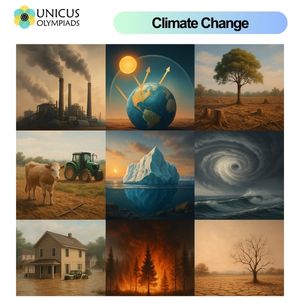

Climate change refers to significant and long-term changes in the global or regional climate patterns. It is primarily driven by human activities, particularly the burning of fossil fuels, deforestation, and industrial practices that release greenhouse gases (GHGs) such as carbon dioxide (CO2) into the atmosphere. These activities have resulted in the warming of the Earth's climate, leading to various environmental changes. As the planet’s temperature rises, it causes alterations to weather patterns, ecosystems, and the overall climate system, which in turn exacerbates the frequency, intensity, and severity of natural disasters. In this article, we will explore the causes of climate change, its impacts, and how it worsens natural disasters like floods, storms, wildfires, and droughts.
The greenhouse effect is a natural process where gases in the Earth’s atmosphere trap heat from the sun, keeping the planet warm enough to support life. However, human activities have intensified this effect by releasing additional greenhouse gases, particularly CO2, methane (CH4), and nitrous oxide (N2O). These gases accumulate in the atmosphere and trap more heat, causing the Earth's average temperature to rise. This enhanced greenhouse effect is the primary driver of global warming and climate change.

Climate change has a significant impact on the frequency and intensity of storms and hurricanes. As ocean temperatures rise, they provide more energy for storm systems, making them stronger and more destructive. The increased heat also causes more moisture to evaporate from the ocean, which leads to more powerful rainstorms and storm surges during hurricanes.
Climate change is contributing to more extreme rainfall events, leading to increased flooding. Warmer air holds more moisture, which leads to more intense rainfall in shorter periods. Additionally, rising sea levels amplify the risk of coastal flooding during storm surges and high tides.
Climate change is increasing the risk of wildfires due to rising temperatures, prolonged droughts, and shifting precipitation patterns. Hotter and drier conditions provide the ideal environment for wildfires to spread rapidly, endangering people, wildlife, and ecosystems.
Rising temperatures and changing precipitation patterns have led to more frequent and prolonged droughts in many regions. Droughts not only affect agricultural production but also result in water scarcity, food insecurity, and economic hardship for affected communities.
The warming of the planet is causing glaciers, ice sheets, and permafrost to melt at an accelerated rate. This contributes to rising sea levels, which have major implications for coastal communities, ecosystems, and infrastructure.
While climate change cannot be completely avoided, communities can take measures to reduce its impact and adapt to the changing environment. Disaster preparedness and climate adaptation strategies are essential for reducing vulnerability to the worst effects of climate change.
To combat climate change, nations around the world must work together to reduce greenhouse gas emissions and implement sustainable practices. Key international agreements include: